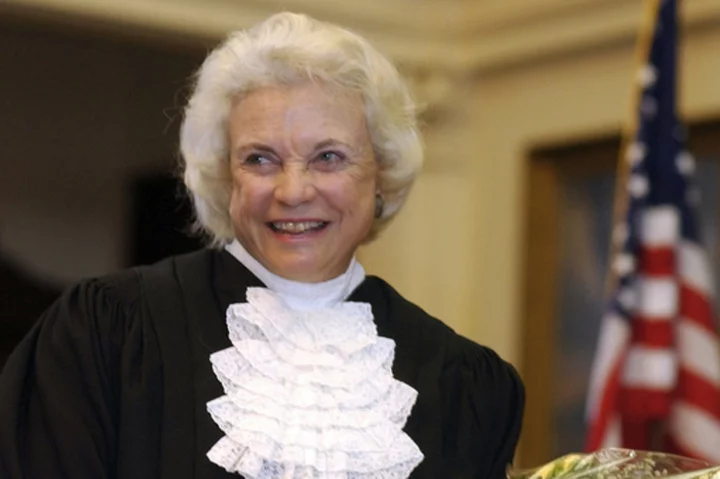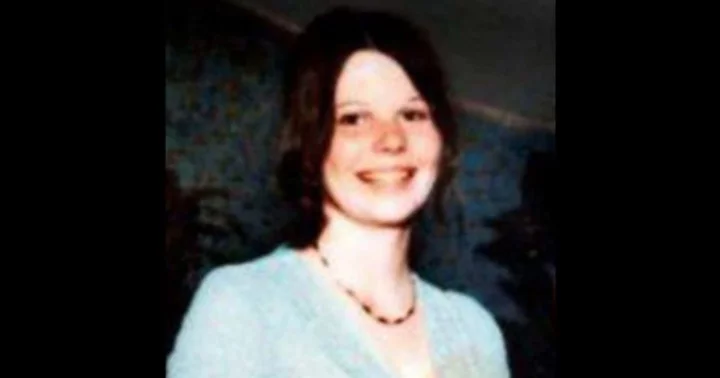WASHINGTON (AP) — One fall day in 2010, retired Supreme Court Justice Sandra Day O’Connor slipped into the courtroom where she worked for nearly 25 years to take in an “amazing” sight.
The first — and for 12 years, the only — woman on the high court saw three women in black robes among the nine justices.
Recalling that day, O’Connor said she “saw a woman on the far right end of the bench, one on the far left end and one near the middle. That was pretty amazing.”
O’Connor lived to see four women serve at the same time on the Supreme Court. What was once a novelty when she was the first woman to sit on the high court has become almost commonplace.
In a sense, O’Connor was witnessing the culmination of her own journey, in which she struggled to get any legal job after graduating from law school in the 1950s, then ended more than 190 years of male exclusivity on the Supreme Court when President Ronald Reagan nominated her in 1981.
O’Connor, who left the court in 2006, died Friday in Phoenix of complications related to advanced dementia and a respiratory illness, the Supreme Court said. She was 93.
Before a woman led a presidential ticket and before a woman had served as secretary of state, O’Connor was known as the nation’s most powerful woman. A onetime state senator in Arizona and the last justice to hold elected office, she wielded considerable political clout with a pragmatic approach to the law that at times irritated colleagues both to her left and right.
One measure of her influence was that the justice who took her place, Samuel Alito, had a more conservative outlook, and the change in that one seat flipped the outcome in major cases involving abortion rights, school desegregation and campaign finance.
O’Connor once said she wasn’t too happy to see her handiwork being dismantled, but she pushed on in retirement with devotion to new causes, arguing for enhanced civics education for schoolchildren, continued independence of judges and increased research dollars for Alzheimer’s disease, which had claimed the life of her husband, John.
The court would grow more conservative still, with President Donald Trump's appointment of three justices. Last year, Alito and Trump's appointees were in the majority to end a woman's constitutional right to abortion, which O'Connor had worked to preserve 30 years earlier.
In June, the court ended affirmative action in college admissions, effectively overturning an opinion O'Connor wrote in 2003.
In recent years, O'Connor's dementia had advanced and she had withdrawn from public life.
She announced in 2018 that she had been diagnosed with “the beginning stages of dementia, probably Alzheimer’s disease.” Her husband died of complications of Alzheimer’s in 2009.
She was the granddaughter of a pioneer, and her independent, tenacious spirit came naturally. Growing up on an Arizona ranch without electricity, Sandra Day learned early to ride horses, round up cattle and drive trucks and tractors.
“I didn’t do all the things the boys did,” she said in a 1981 Time magazine interview, “but I fixed windmills and repaired fences.”
When she first got to the court, she didn't even have a place anywhere near the courtroom to go to the bathroom. That was soon rectified, but she remained the court’s only woman until 1993.
Then, much to O’Connor’s delight and relief, President Bill Clinton nominated Justice Ruth Bader Ginsburg.
Though they looked and sounded nothing alike, lawyers would from time to time mistakenly identify one as the other. That prompted the justices to get T-shirts to help. The shirt fronts read, “The Supremes.” The back of O’Connor’s shirt read, “I’m Sandra, not Ruth.”
Ginsburg, who died in 2020 at age 87, would call O’Connor “a great big sister.”
The enormity of the reaction to O’Connor’s appointment had surprised her. She received more than 60,000 letters in her first year, more than any one member in the court’s history.
“I had no idea when I was appointed how much it would mean to many people around the country,” she once said. “It affected them in a very personal way. People saw it as a signal that there are virtually unlimited opportunities for women. It’s important to parents for their daughters, and to daughters for themselves.”
At times, the constant publicity was almost unbearable. “I had never expected or aspired to be a Supreme Court justice. My first year on the court made me long at times for obscurity,” she said.
Following her retirement, O’Connor expressed regret that a woman had not been chosen to replace her. She was glad when President Barack Obama chose Sonia Sotomayor to replace David Souter in 2009, but said, “It’s not enough.”
The next year, Obama named another woman, Elena Kagan, to the court, giving it three female justices for the first time.
Trump named Justice Amy Coney Barrett to replace Ginsburg, and when Justice Stephen Breyer retired last year, Justice Ketanji Brown Jackson joined the court, the first time four women have served together.
That still wasn't enough for Ginsburg, who once said she'd be satisfied when all nine justices were women.
O'Connor displayed a sense of humor, even in the face of slights.
When in 1983 an apparently forgetful New York Times writer reporting on Washington shorthand names referred to the “nine men” of the SCOTUS (Supreme Court of the United States), O’Connor responded with a tweak.
“According to information available to me, and which I had assumed was generally available, for over two years now SCOTUS has not consisted of nine men,” she wrote.
In her letter, O’Connor referred to herself as FWOTSC — shorthand for “First Woman on the Supreme Court.”
“You can’t be around her very often without seeing traces of her delightful sense of humor,” Ruth McGregor, one of O’Connor’s first Supreme Court law clerks, said years after leaving that job. “She just gets a kick out of so many things.”
O’Connor remained active in the government and otherwise even after she retired from the court. She sat as a judge on several federal appeals courts, advocated for judicial independence and served on the Iraq Study Group. She also was appointed to the honorary post of chancellor at the College of William and Mary in Virginia.
She championed Alzheimer’s research and the need for civics education. O’Connor plugged her new children’s book on David Letterman’s late-night program on CBS and traded jokes with Jon Stewart on Comedy Central’s “Daily Show.”
O’Connor cited her husband’s struggle with Alzheimer’s disease as her primary reason for leaving the court. But he deteriorated so quickly that O’Connor soon moved him into an assisted living center. John O’Connor struck up a romance with a fellow Alzheimer’s patient, a relationship experts say is not uncommon among people with dementia.
The retired justice was relieved that he was comfortable and happy at the center, according to her son Scott. Two other sons, Brian and Jay, also survive her.
She once described herself and her eight fellow justices as nine firefighters.
“When (someone) lights a fire, we invariably are asked to attend to the blaze. We may arrive at the scene a few years later,” she said.
O’Connor announced her retirement in a one-sentence written statement. She cited her age, then 75, and said she “needs to spend time” with her family.
She was 51 when she joined the court to replace the retired Potter Stewart. A virtual unknown on the national scene until her appointment, she had served as an Arizona state judge and before that as a member of her state’s Legislature.
Her career did not begin auspiciously. As a top-ranked graduate of Stanford’s prestigious law school, class of 1952, O’Connor discovered that most large law firms did not hire women.
One Los Angeles firm offered her a job as a secretary.
Perhaps it was that early experience that shaped O’Connor’s professional tenacity.
—-
Richard Carelli, a former Supreme Court reporter for The Associated Press who is now retired, contributed to this story.









